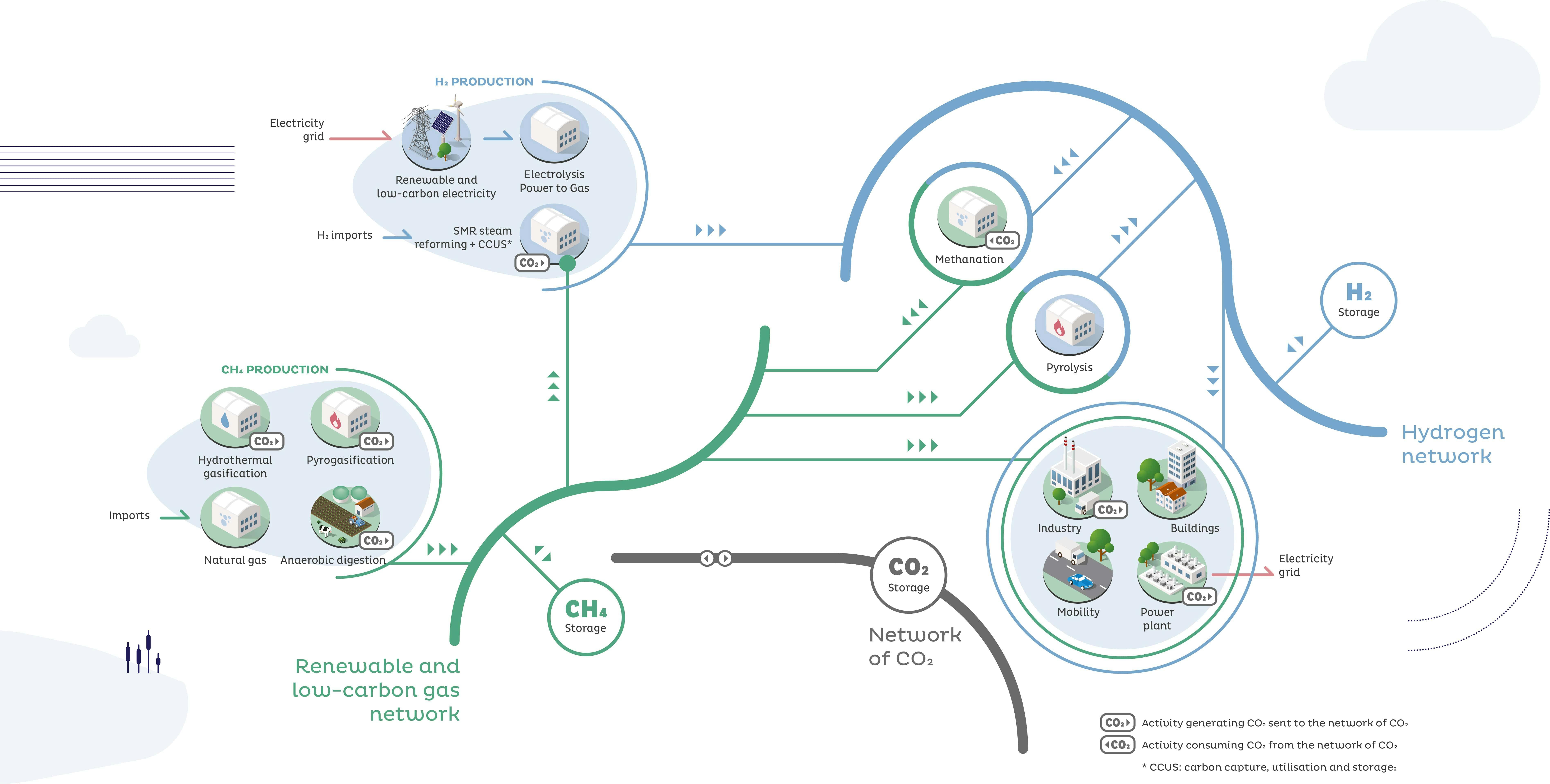
This vision of 100% renewable gas by 2050 goes hand in hand with the evolution of the gas transmission network, which is becoming a network that transports only renewable or low-carbon gases, and is capable of linking multiple consumption and production points and storage facilities.
It is also a network that is developing its complementarity with other networks.
Finally, it's a network that is partly reconverted into a renewable or low-carbon hydrogen transport network, contributing to the transport of CO2.
Our infrastructure vision is based on a forecast scenario for renewable and low-carbon gas consumption and production constructed jointly with the gas network operators5 and presented in a document published in July 2022. This scenario is compatible with achieving carbon neutrality in France by 2050.
By 2050, all gas consumed will be from a renewable or low-carbon source, in respect of available sources of biomass as confirmed by several recent studies (Solagro, France Stratégie, Ademe). The scenario is also compatible with the European Fit for 55 target6. This vision of 100% renewable gas by 2050 is dependent on changes to the gas transmission network, transforming it into a network that will only carry renewable or low-carbon gases and is capable of connecting multiple production and consumption points with storage locations. It is also a network that is developing its complementary aspects with other networks. Lastly, it is a network partly repurposed into a transmission network for renewable or low-carbon hydrogen, and contributing to the transmission of CO2 as part of the development of a CCUS chain (Carbon Capture, Utilisation and Storage)7.
5 GRDF, Teréga and SPEGNN, GRTgaz.
6 For France, this corresponds to a reduction of less than 50% in greenhouse gas emissions by 2030 compared with 1990.
7 See 3.2 Our climate strategy.
